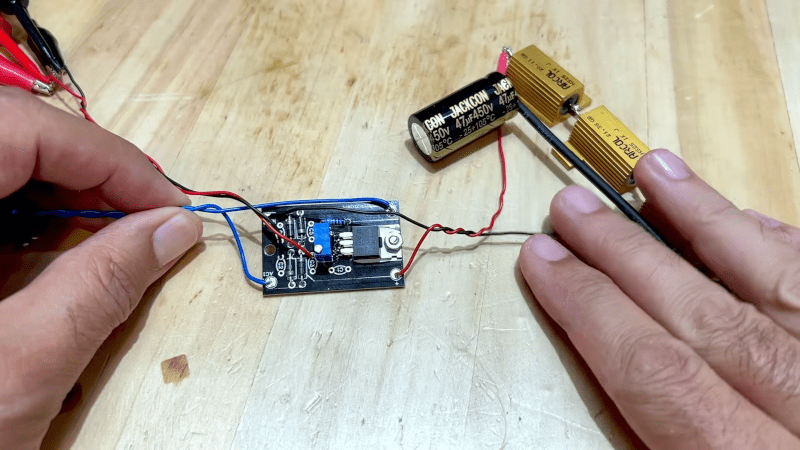Old radios often had selenium rectifiers to convert AC to DC. The problem is that the old units, dating back to 1933, are prone to failure and to release dangerous chemicals like hydrogen selenide. [M Caldeira] has a new board made to fit a particular rectifier and also allows a varying voltage drop. The circuit consists of a few diodes, a MOSFET, and a pot for adjusting the voltage drop. An IRF840 MOSFET provides the adjustment.
Did it work? It did. The good news is that if it fails — which shouldn’t happen very often — it won’t release stinky and noxious fumes
We wondered if he should 3D print a fake case to make it look more the part. If you haven’t seen a real selenium rectifier, they were made of stacks of metal plates coated with bismuth or nickel. Then, a film of doped selenium was annealed to the surface to form cadmium selenide. Each plate could handle about 20 V and the more plates you used, the more reverse voltage the device could withstand.
Selenium was also found in old photocells. If you fancy replacing other parts of an old radio, you might consider a faux magic eye or even one of the main tubes.
















Once, while restoring an ancient FM radio from the sixties (Nordmende, stereo, really big enclosure :-), I met a defunct selenium rectifier. I replaced it with a silicon rectifying bridge worth $0.2. It worked perfectly, and the valve sound was beatiful. :-)
I’ve seen selenium rectifiers inside devices from the sixties – the main transformer for an electric railway toy I was playing with as a kid IIRC.
Had one of these in a 60s vintage Honda motorcycle that I had in the early 70s. It died and needed to be replaced, but it was before I knew anything about electronics.
Selenium rectifiers are stinky when they burn up.
Reminds me of an ancient pun. In German, a rectifier is a “Gleichrichter”.
The pun is that tinkerers spelled it a “gleich-riecht-er” (soon-smells-he).
Gleichrichter comes from word “Gleichrichten”, which can be loosely translated to equalizating (in the sense of making equal; rectifying).
Riechen (with e) means smelling. Er means he (the device type ending with -er is male).
The pun is from the times of selenium rectifiers..
It’s not very funny, I admit, but it’s sort of a classic.
It’s dad humor category, if you will. Very flat.
Pleased to read your pun, as im not only an electronics enthusiast, but also a hobby learner for both english and german
I recently heard another one about debugging tubes: “du kannst sehen, wenn sie gehen, und riechen, wenn sie siechen” (you can see when they perform well, and smell, when they perform not so well)
The problem with replacing selenium cells is they often power the circuits they are used in. At least they are when used as camera light meters.
I haven’t had to replace one, but I would’ve just swapped in a silicon diode rated for the application
Silicon diodes are several times more efficient than Selenium. The voltage drop usually needs to be taken into account.
In some cases the resulting voltage was double what was intended when simply replacing with a silicon diode.
The same thing happens with solid state replacements for rectifier vacuum tubes. I restored a Collins 51J3 receiver where the previous owner had put a solid state module in the socket for a pear shaped 5U4, but didn’t install a ballast resistor. I obtained a period correct 5U4 which was necessary for the hold-down bracket to fit properly.
The tuning oscillator PTO has a separate glow regulator tube, but the increased plate supply voltage apparently could not be overcome by the regulator and the carbon pile in the PTO was permanently slightly shifted. That threw off the tuning linearity across the 1 MHz band segments.
I remember a high school electronics teacher talk about putting a 50 ohm resistor in series with one of those newfangled silicon diodes to compensate for the lack of a voltage drop in typical B+ supply.
He said if one of those start smoking, kill power and get out immediately!
A bunch of 1N4007 diodes in series does the job much more simply. Did we need another yt video for this overly complex setup?
Burned a couple of those up as a kid. They smell worse than H2S. They smell worse than burning hair. Remember the smell of a camera shop? Multiple that by the smell of burning hair and you’re in the ballpark. No telling how many years that will end up costing.